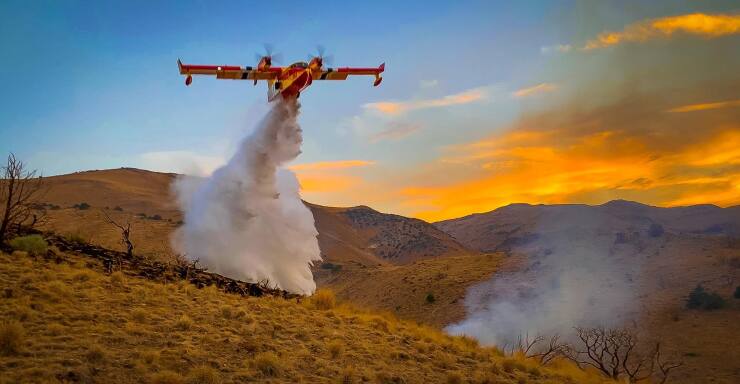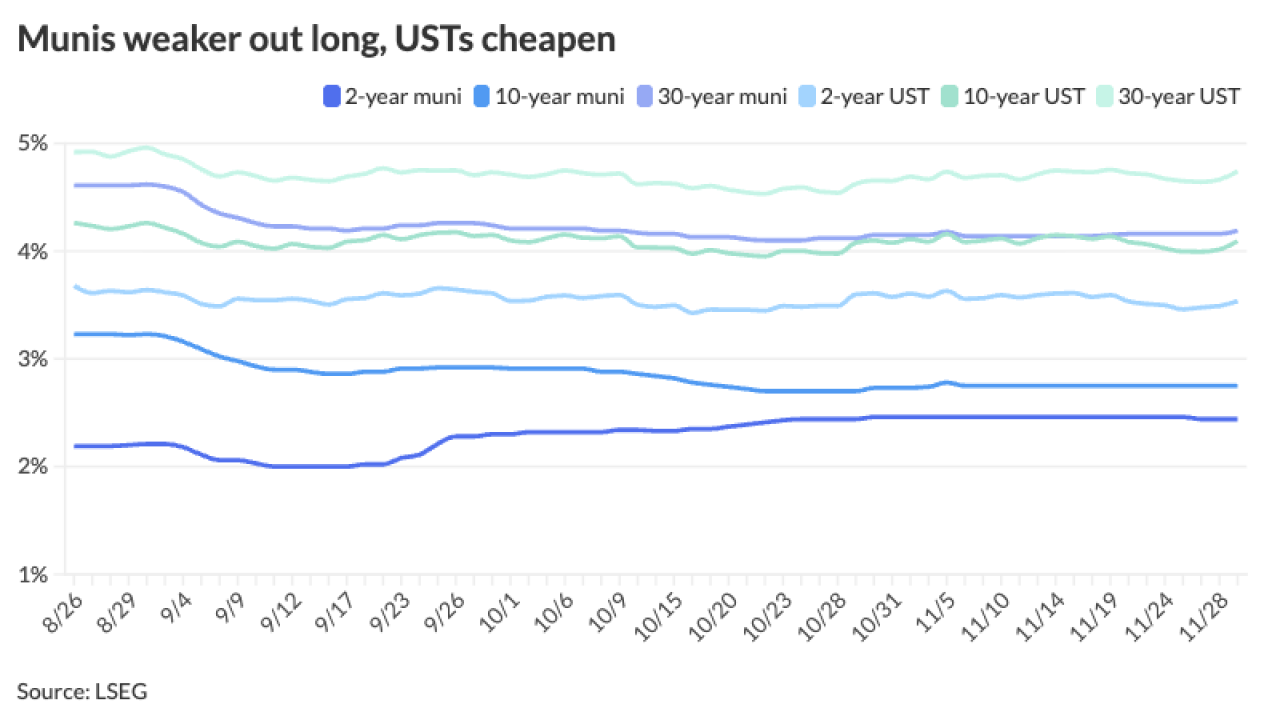Municipal bonds will fund the expansion of an aerial firefighting firm that has grown quickly to meet demand driven by massive wildfires that have plagued Western states for the past several years.
Belgrade, Montana-based Bridger Aerospace Group has grown to 160 employees since chief executive Tim Sheehy, a former Navy SEAL and certified pilot, founded the firm eight years ago.
D.A. Davidson and Jefferies are preparing to price $160 million in unrated federally and state taxable industrial development revenue bonds to aid further expansion. The date hasn’t been set on the bonds, but the bankers expect to bring the deal in mid to late June, said Kyle Thomas, a D.A. Davidson managing director. JMG Attorneys is bond counsel.

“Unfortunately, there has been a lot of demand for forest fire suppression assets in the U.S.,” said McAndrew Rudisill, Bridger’s chief investment officer and a director.
The deal being sold through conduit Gallatin County, Montana, will refund $7.6 million of revenue bonds; pay $133 million to add four CL-415EAF Super Scooper planes at a cost of $28 million each to its fleet, of which two have already been delivered; and construct two hangers on the Belgrade campus near Bozeman Yellowstone International Airport to bring the total to four. The proceeds will also fund a $19.7 million debt service fund.
Drought, increasing temperatures, overgrown forests and increased development near forests have resulted in more frequent and severe wildfires across much of the West.
Nearly a quarter of the U.S., mostly in the West, is at moderate to very high risk of severe wildfires, according to the U.S. Forest Service. This comes on top of several years of fires that have burned millions of acres in
Fire activity
The situation had become so bad in California that S&P Global Ratings analysts said in a report last year the state no longer has a “fire season, because it’s become a year-round phenomenon.”
“Fires have become more of a year-round event,” Rudisill said. “Peak season is June through November in the western U.S.”
It’s not just climate change driving the compounding fire problem, but that the number of people who live in what is called the urban-wildland interface has increased, he said.
“It’s a confluence of events, plus the temperatures are higher on average,” Rudisill said. “That is why it’s important to put them out quickly.”
In addition to the increase in the number of fires during the time Bridger has been in business, the fleet of suppression aircraft in the U.S. is very old, and much of it is being taken out of service, Rudisill said.
“There has been a lot of demand, and that demand has continued to grow, and the supply of fire suppression aircraft has gone down," Rudisill said
The company has more than 30 contracts with state and federal government agencies, but the primary contract is with the U.S. Forest Service, Rudisill said. One in five of its employees are U.S. veterans.
Kestrel Verifiers provided an independent opinion that the bonds qualify as sustainable. Kestrel said it determined that the bonds conform with the four core components of the International Capital Market Association.
The planes it uses are more environmentally-friendly, because they scoop up lake water, so they don’t use environmentally-harmful chemicals to suppress fires, according to the online investor presentation for the bonds.
“Kestrel rated our company sustainable and a protector of national resources,” Rudisill said. “We got the second-party opinion prior to raising the equity, because a lot of environmentally focused funds require a sustainability rating.”
The company received a lot of interest from ESG funds when it did a $300 million private equity raise in April, he said.
“What we are doing directly reduces CO2 emissions by putting out fires,” he said. “Fires are the No. 1 or No. 2 emitter of CO2 emissions behind cars and factories.”
The CL-415 EAF airplanes the bonds will finance are the only aircraft purpose-built for aerial firefighting, according to the investor presentation. Most firefighting aircraft are conversions.
The planes have a higher water drop capacity and faster airspeed than helicopters and can drop 50,000 gallons of water on fires before refueling, compared to the 20,000 gallons of fire retardant a 747 super tanker can drop before refueling, according to bond documents.
“Scoopers can do 15 drops an hour,” Rudisill said. “They can land on a lake. They don’t have to go to base and refuel. They are pretty efficient planes.”
Its fleet is growing in 2022 from four to six Super Scoopers; nine other planes including five twin commanders and four Daher Kodiak aircraft for reconnaissance and command; and two drones for aerial intelligence, imagery gathering and real-time active wildfire mapping. By 2026, it plans to grow the entire fleet to 12 Super Scoopers, 33 reconnaissance and command planes and seven drones.
The $300 million in private equity will help it expand into the rest of the U.S. and internationally, Rudisill said.
The bonds will be sold as term bonds maturing in September 2042 with level annual debt service. They include an optional redemption on Sept. 1, 2029, at 103% declining annually to par.
Purchasers are restricted to qualified institutional buyers in denominations of $100,000 or greater.
State statute requirements limit non-rated bonds to qualified institutional buyers, but it came down to a discussion between the issuer, bond counsel and the banking team as to who the appropriate investors would be, Thomas said.
He doesn’t think limiting it to qualified institutional investors will shrink the pool of buyers because institutional buyers are usually the only buyers of this type of deal, he said.
The finance team had planned a two-week marketing period for the bonds, because “it’s a great company with a unique asset in the Super Scoopers.” A challenge will be that the unrated bonds fall in the high-yield category, which has seen less demand and a lot of outflows in current market conditions.
It's apt to directly benefit Bridger as a taxable issuer, but one good sign for the category as a whole is that Nuveen recently
When Nuveen
Improving market conditions and strong state and local revenue collections were a chief influence in the decision, according to a Nuveen spokesperson.





